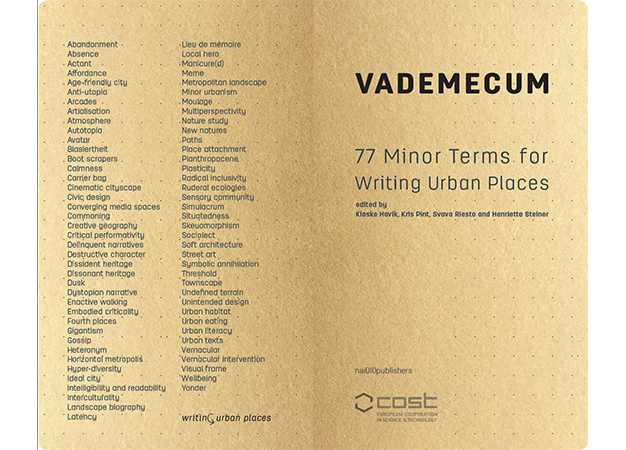Exploring Urban Places
In this Vademecum a set of concepts is presented that help to explore new ways of thinking about and experiencing urban places, by introducing a diversity of concepts that might reveal blind spots in urban discourse or bring insights from one discipline to another. Different theoretical concepts are used in different discursive domains that deal with the urban landscape: they help to make sense of what happens in the city, but they also imply a specific outlook on the city.
The Vademecum is a product of the COST Action research network 'Writing Urban Places'.
metropolitan landscape
The metropolitan landscape is a hybrid of two systems. One is that of nature and the agricultural landscape. This is set over against the spatial system of the city. Each has its own topography, spatial form and visual structure, and their structure and morphology overlap and interact rather than merely lying next to each other. In this unstable, dynamic environment the continuity and compositional logic of the classical city appears to have been replaced with a contiguity of elements and networks, different spatial conditions that exist next to and on top of each other, in a constant process of formation.
new natures
Concepts such as ‘second nature’, ‘third wilderness’, ‘third landscape’, ‘fourth nature’ and ‘new nature’ attempt to grasp a new type of nature: neither primordial nature nor the cultivated nature of conservation areas and national parks, but a hybrid between forms of urbanisation and ecological systems. They range from intentional designed ecologies as strategies for urbanisation processes to spontaneous ecologies as unintended but welcome results of urban processes.
paths
the analysis and design of urban landscapes from the narrative, spatio-temporal perspective of the experiencing subject moving through the city. Such a spatiotemporal continuity is like an inverted narrative: where literary narrative unfolds in time and the space of action is suggested, in the space of the physical city the dimension of time is suggested by paths.
ruderal ecologies
Ruderal plants are the first to colonise disturbed land, setting the stage for other ecosystems. These species are indicators of global connections, of a city coming back to life, and of global environmental change. The ruderal can also be viewed as an analytical framework for rethinking the heterogeneity of contemporary urban life, to redirect attention towards human/non-human relations that emerge spontaneously in inhospitable environments.
in Klaske Havik Kris Pint Svava Riesto & Henriette Steiner eds. Vademecum 77 Minor Terms for Writing Urban Landscapes nai010 publishers 2020.
